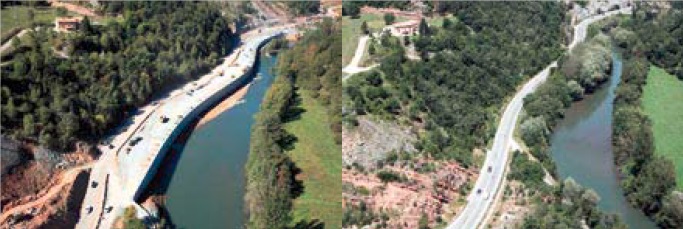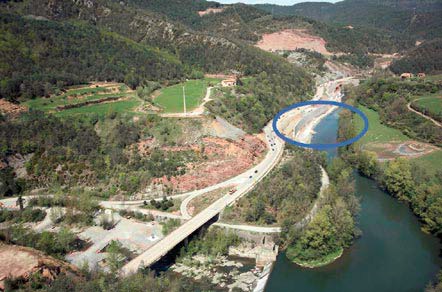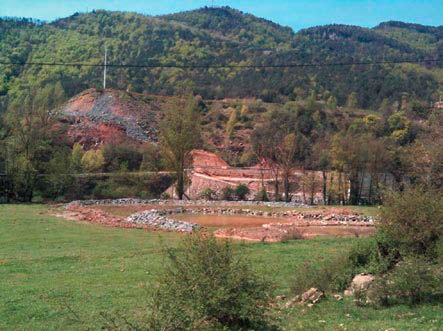Vic-Ripoll TJV
Description of the Environmental Measure.
Problem detected:
During the construction of various foundations of the wall, it was necessary to reduce the amount leakage water accumulated to enable excavation, steel framework, formwork and concrete works to be completed. As a consequence of the earthworks associated with the excavation of foundations, the pumped water had a high concentration of suspended solids, a circumstance which logically precluded direct discharge it into a public watercourse, and it made necessary the installation of a water treatment system.
The main problem were the ground conditions, the existing traffic and the lack of space, what made unviable the installation of Water Treatment Plants with settling basins, as they are usually used on other sites. Furthermore, the system must be properly dimensioned to treat average flows of approximately 150m3/hour and it must be capable of absorbing the unpredictable peaks when the river flow increased.
All this implied an important difficulty of properly management the water flows originating from the water table.
Solutions adopted:
As an alternative settling system it was decided to use the water pumped out from the groundwater table to irrigate pasture fields located on the right bank of the River Ter, in front of the wall planned. This way, the field irrigated with the pumped water acted as a re-infiltration area.
As the works progressed and, therefore, the volume of water requiring treatment increased, it was decided to reinforce the above system by constructing sedimentation basins in the field itself. These basins were constructed as gravel filter containment walls, covered with geotextiles and aligned in a crescent shape row.
Maintenance work on the basins was performed regularly, removing solid materials deposited and replacing the gravel and/or clogged geotextiles.
Results:
- The solution put forward made it possible to effectively treat the water flows originating from the water table, thus achieving values which made them suitable to be discharged into the Public Water Supply.
- To test the quality of the discharged water while constructing the wall, quality control was performed on the River Ter freshwater by taking samples and analysing the water on a monthly basis. The following parameters were tested: pH values, suspended solids, settling solids, BOD5, oxidability, dissolved oxygen, oils and greases, temperature, colour, conductivity and total phosphorous.
- All of these analyses, to which satisfactory results were obtained, confirmed the suitability of the measures taken.

Aerial photograph of the River Ter before and after the construction of Wall 13.5.

Aerial photograph of the wall under construction and of settling basins aligned in a crescent shape row located on the opposite bank of the River Ter.

Detailed view of settling basins aligned in a crescent shape row located on the opposite bank of the River Ter.








